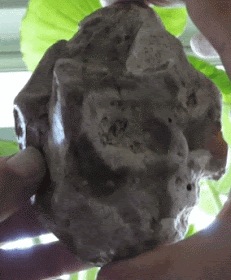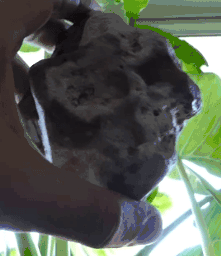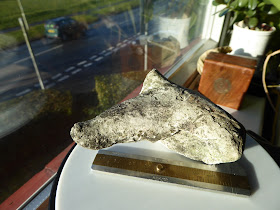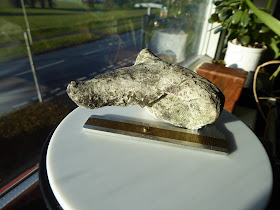Not all
figure stones are highly detailed works of art, in fact the high quality examples shown on this blog are not the norm. The creation of such high art objects requires immense skill and fore-fort, which probably only few possessed. So what of the lesser skilled artists and flint knappers in antiquity?, how did they get their point across?
Flint nodules come in many diverse shapes and sizes, a less skilled or otherwise occupied flint artist could find a naturally shaped flint nodule and exploit its form to produce an adequate figure stone, with minimal time, effort and modification.
A large part of figure stone visual figurative conveyance is likely in motion, so they were animated to clarify the desired description. I have quite a few examples here on my blog, where the stones almost 'come alive' with some simple hand movements, producing very convincing animations.
So... a simple shape with some movement in the hand, could easily convey the common figurative subjects of the more complex figure stones.
Below is an example of a flint nodule from my find site, which has minimal modification and could be used to convey many animal descriptions.
Suggested motifs: bear head, swan in flight, elephant head, bovine front, small finch like bird, ray/angel shark, gorilla strut, crocodile head, pointing hand, sauropod half leaning against a tree.
Although most of these suggested motifs are pure conjecture, (showing few details), all of these have been found repeatedly in materials from my site, some in the same combinations, and all have highly detailed comparative examples, and this is clearly a prehistoric artifact.
Above: ear, eye, and mouth features etched in cortex produce the bear head description facing right.


'Another problem is raised by the so-called 'figure stones', which are nodules with very little trimming or adaptation, but with fanciful resemblance to various animals, birds, reptiles, and even human beings. The flake which generally forms the 'eye' is often minute and in the right place, but the identification of the figure is largely a matter of conjecture, though some examples are almost convincing. Weather figure stones are due to man or to nature, it may be urged that the earliest sculptures known are in the round (as opposed to engraving or low relief), and it is not unreasonable to suppose that man's first attempts at art consisted in giving the finishing touches to a nodule in order to create or improve a likeness to some real or imaginary animal. One of the earliest instincts of children is to mould figures in clay, and this in itself might be used as an argument for the great antiquity of sculptures in the round' Reginald Smith, 1932.




















































